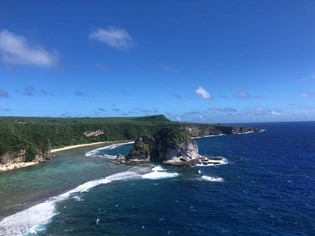 HKU Department of Earth Science
HKU Department of Earth Science
Seminar

Time-integrated zircon trace element compositions as proxies for tracking crustal evolution
-
Date
November 16,2021
-
Time
9:00AM
-
Venue
JL105
-
Speaker
Miss LIU Hangyu Department of Earth Sciences, HKU
The continental crust plays an important role in modulating atmospheric chemistry, climate and biodiversity, thus making it important to understand how continents and tectonic processes evolve through time. Detrital zircon geochemical data can provide the potential to record cryptic crustal histories. While studies focused on U-Pb, Lu-Hf, and O isotopes have proven insightful, zircon trace element (TE) compositions can offer additional information to elucidate the evolution of magmatic arc systems and continental crust at regional and global scales. Herein, I will first present the application of zircon TE data to track the transition from island-arc extension to arc-continental collision from the late Paleozoic to Mesozoic in Thailand. The ɛHf(t), LREE/HREE, Dy/Yb, (Eu/Eu*)N, (Ce/Ce*)N, Th/U, Nb/Ta, U/Yb, Nb/Yb, and the classifiable "felsic" and "S-type" zircon proportions correspond well with regional magmatic and tectonic shifts. Based on these results, a global database of zircon TE values was subjected to statistical assessments to track secular changes in crustal processes over the past ~4.4 Ga. Notably, the observed decoupled trends after 1.0 Ga between zircon P, U, Th, (Eu/Eu*)N that increase and Hf, Ti, Dy/Yb that decrease indicate more juvenile magmatism and less continental clastics into arc magmas, which may be driven by global mantle cooling and increased slab-roll back. Additional research on the Mariana intra-oceanic island arc yielded detrital zircon with Miocene-to-Archean U-Pb ages. The old Pre-Cenozoic grains were derived from continental erosion, which informs the origin and migration of the modern Mariana arc. Finally, Cenozoic-aged Mariana detrital zircon TE data may help track the compositional evolution and of the arc system.
Additional information: Miss LIU Hangyu, hangyu@connect.hku.hk
